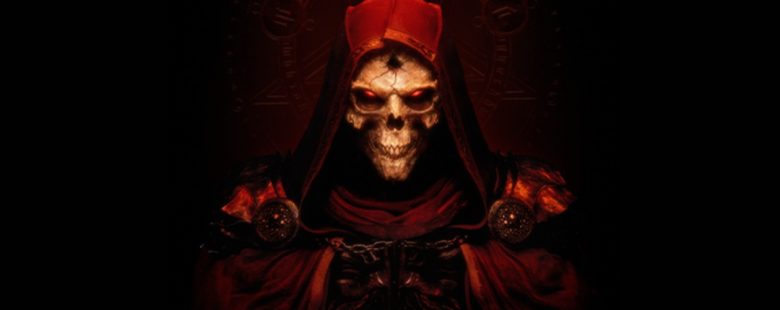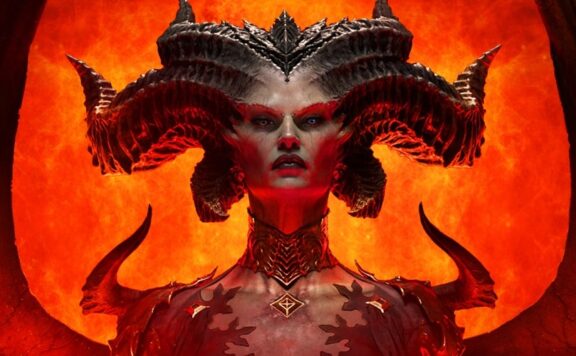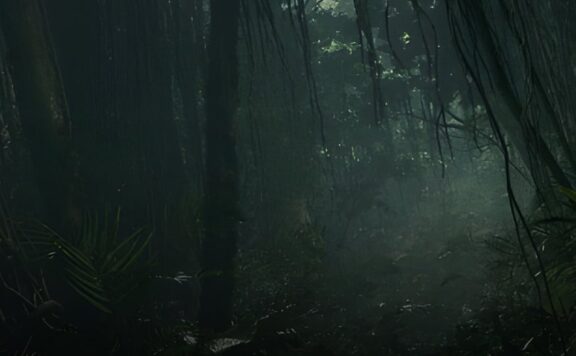Slay monsters, hoard loot, level up. These are simple yet effective components powering the Diablo series, adventurers grinding away for endless hours after being caught in that all too familiar loop. With Diablo 2 Resurrected launching later this year – and with the first alpha test now underway – let’s take a look back at the origins of this landmark series.
Selling over 25 million copies worldwide and on multiple platforms, Diablo is easily one of the strongest series in the Activision Blizzard stable, having defined the term “dungeon crawler” while inspiring countless other roleplaying games.
However, this world-beating saga wasn’t born from dank crypts and the bloodletting of musclebound barbarians. It actually began with Justice League.
Justice League: Diablo
During the 90s Diablo’s original creators, Condor, were making games based on popular IP for other companies. 1995’s Justice League Task Force for the Sega Mega Drive was a suitably hellish flop for the developer with the SNES port handled by Blizzard.
A relationship soon formed with Condor pitching Diablo to Blizzard. Diablo originally featured 16 online-enabled levels, claymation character sprites, and turn-based gameplay with hundreds of spells, monsters and weapons. The narrative focused on a single hero based in the city of Tristram, taking side quests from villagers.
The Evolution of Diablo
As time moved on, Diablo mutated into a completely different game. Firstly, our prefab protagonist was switched out with three class archetypes to give players a greater sense of freedom in creating their own adventurer. The warrior, sorcerer and rogue would serve as the foundation of later games, as well as the wider western RPG genre.
The cut map of the stars feature would have given players a countdown timer for Diablo’s power surge due to a planetary alignment. Condor failed to adjust Diablo’s difficulty level, however, leading to an easy final boss fight.
Much of the content originally planned for Diablo was also shelved including items, enemies, and spells. Some existed in future sequels and expansions, but the majority lay on the cutting room floor or buried in Diablo’s source code. The claymation idea was also scrapped in favour of traditional 3D visuals, Diablo’s top-down isometric view becoming the standard for countless dungeon crawlers to come.
From Condor to Blizzard North
Trimmed down online functionality was the result of Condor running into financial troubles towards the end of Diablo’s development. Thankfully their pals at Blizzard purchased and saved the studio. The newly branded Blizzard North would cut the 16 online levels down to four and create a new online play engine. Battle.net is now a household name among PC gamers, allowing Diablo players to chat and play with others. Although not the first online RPG, it was still revolutionary for its time.
Blizzard North followed up with Diablo 2 on 29th June 2000, which sold one million units in its first week alone. According to project lead Erich Schaefer, Diablo 2 had no official design document taking nearly three years in development instead of the planned two.
Diablo 2: Hell Yes
Initially featuring five classes with skill trees, Diablo 2 would see players hunting down Diablo’s brothers in a gripping new saga boasting beefed up action RPG gameplay. It was a true sequel in every sense. Blizzard North opted for a third-person narrative delivery in cutscenes due to budget and technical limitations at the time. While not quite as immersive as Blizzard North had planned, this storytelling shortcut allowed them to save crucial time and money during development.
Blizzard North dropped a few hints for future Diablo 2 content via NPC Natalya. The unassuming character would later turn out to be an Easter egg, teasing Diablo II’s playable Assassin class. She would join the newly added Druid as part of Diablo 2: Lord of Destruction, a 2001 expansion that added a fifth act to the game’s storyline, as well as myriad other advanced roleplaying mechanics.
A second expansion titled was also in development, though Blizzard North would ultimately turn their attention to Diablo III instead. According to staff who work on it, the lost expansion would have introduced a Cleric class while also dialling up Diablo II’s multiplayer features with a dynamic guildhall, pushing it further into MMO territory. Still widely enjoyed today, Diablo II received its last patch from Blizzard in March 2016, by which time Diablo III was available.
Diablo III: a sequel worth waiting for?
Blizzard North started to slowly decay, with the majority of staff leaving in 2003. Ultimately, North was closed down in 2005. It left the future of the rumoured Diablo III shrouded in mystery and uncertainty. However, the sequel would re-emerge in 2008 at the Blizzard Worldwide Invitational and was eventually released four year later. It’s fair to say that Diablo III didn’t enjoy the most stable of video game launches, wracked with issues as eager fans found themselves constantly booted from its servers.
Diablo III would eventually turn things around, extensive post-launch patches helping to fix some of its more notable flaws, paving the way for what is considered one of the best modern RPGs still in circulation. The most significant Diablo III controversy was gold trading, however. The game’s online auction house saw items being flogged for real cash. Bots and physical gold farmers would seek to profit from this, which ultimately knocked the auction house system out of balance, Blizzard ultimately removing gold trading in patch 2.0.1.
The Paragon System
Diablo III’s Paragon levelling system was for players wishing to advance after hitting the game’s level cap of 60. Patch 1.0.4 allowed them to gain “Paragon” levels to boost core statistics. It led to buffed strength, defence and higher quality/quantity of loot drops.
Fun fact; Diablo III has dungeons known as Development Hell and the Quality Well. Only accessible on more significant difficulties with a 1% chance of appearing, they feature zombies named after the development and QA teams
In Feb 2013, confirmation for Diablo III on PS3 and PS4 consoles arrived at a Sony press conference. Blizzard later confirmed an Xbox 360 and Xbox One presence with Diablo: Eternal Collection later released in June 2017 on PS4, Xbox One and later Nintendo Switch, which featured Amiibo support and exclusive Zelda-themed content.
What’s next for Diablo?
Fast forward to 2021, and Diablo has three games in active development: the already divisive mobile RPG, Diablo: Immortal, a remake of Diablo 2 dubbed Diablo 2 Resurrected, and Diablo IV. Nearly 25 years after its debut, Diablo is still an indomitable force in the gaming industry – RPG royalty with its eyes set on new horizons while blessing nostalgic fans with a chance to relive its seminal dungeon-crawling sequel. Diablo 2 Resurrected will arrive later this year on PC, PS5, Xbox Series X|S, PS4, Xbox One, and Nintendo Switch.







